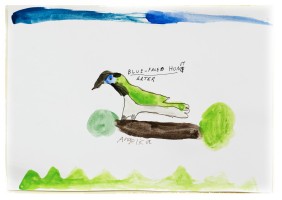The score is a carefully selected list of these described bird calls. Each call on this list was freely interpreted by the musicians involved. Their calls were recorded and assembled by Boyd into the BIRD CRY composition and heard through many small speakers in the work. The sound was mixed to move around 5 separate channels to give listeners a feeling of space.
The Bird selection was made for both musical and thematic reasons. The descriptions needed to work as triggers to challenge and excite the Musicians imaginations and to provide a rich pallet of sound for the composition. Each musician was recorded in isolation with only the score to guide them.
